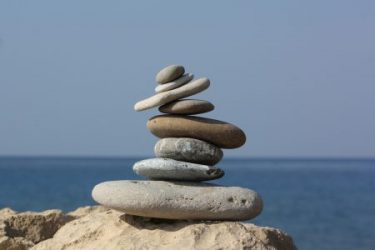Acting On Your Balance System

Un texte de Amy Rogerson
Paru dans le numéro Hiver/Winter 2019
Publié le : 25 novembre 2019
Dernière mise à jour : 31 octobre 2020
By Amy Rogerson et Karine Tcholkayan Today’s column will focus on our balance system and what helps maintain its integrity. To keep things interesting, we thought we’d start with a test of your own static balance. Make sure this test is safe for you. That you don’t have dizziness or joint instability. Choose a secure…
By Amy Rogerson et Karine Tcholkayan
Today’s column will focus on our balance system and what helps maintain its integrity. To keep things interesting, we thought we’d start with a test of your own static balance. Make sure this test is safe for you. That you don’t have dizziness or joint instability. Choose a secure place in your home and time your balance on one leg as you focus on a spot in front of you. When you are ready, bend the opposite leg off the floor without allowing it to touch the stance leg. Give yourself three trials and sufficient time to rest in between. Did you make it for more than ten seconds? Thirty seconds? What do you think influences your capacity to maintain your balance?
When we ask our patients to try this test in the clinic, we often get two different types of responses. The first being, “Oh, my balance has never been great” . The second being complete surprise at having trouble balancing on one leg. Balance control is the foundation of a person’s ability to move and function independently. Balance however is not a simple feat. It involves the complex coordination of your muscles, joints, nervous system (somatosensory system), vision and vestibular system (inner ear).
For healthy adults, moving on firm ground, the balance system relies on 70% of the somatosensory information, 20% on vestibular information and 10% on vision. However, if the surface is unstable, more emphasis will be placed on vision.
All this unconscious, rapidly processed information is needed to maintain balance with our day to day activities such as bending down to tie our shoes, recovering our footing on a moving bus or with an unexpected toss by a rushed passerby.
Falls are more common with ageing and this insecurity can have tremendous impact on one’s quality of life. Certain factors associated with ageing that can affect balance are changes in eyesight and depth perception, decline in cognitive ability, disease or injuries in weight bearing joints and vestibular abnormalities causing dizziness. Certain medication also can impact your balance. These concerns however, as well as the fear of falling, will lead people into a vicious cycle of inactivity. Sedentary behaviour over time is known to speed up the process of these age-related changes. Without strong muscles and bones, we are left with a fragilized system that is more prone to injury when falling.
The good news is that keeping active on a regular basis, maintaining strong muscles and working on your balance with specific exercises can help prevent the risk of falls. Activities that work on a narrow base of support or in single leg stance are important, mixing both static and dynamic movements. It is most beneficial to eventually progress the balance movements to dual-task conditions. You may have noticed that some of your senior counterparts stop walking when you talk to them. This is a typical scenario proving that loading the system with cognitive (discussion) and motor tasks (walking) at the same time can be challenging for many.
Certain example of activities that can target the balance system in a fun environment are yoga, Tai Chi or other martial arts, balance and postural stability classes, bowling, outdoor hiking and dancing. It is essential that the approach you choose be challenging and specific to your needs. A good teacher or coach will help you adapt the balance movements and help keep it interesting! In order to truly reduce the risk of fall, studies support that a person must dedicate themselves to these types of movements 2 hours per week for a period of 3-12 months.
Now, to come back to our initial test! Are you within normal range? It is never too late to start acting on your balance system!
- age 40-49 : 40 seconds
- age 50-59 : 37 seconds
- age 60-69 : 27 seconds
- age 70-79 : 15 seconds
- age 80-99 : 6 seconds
Article written by Karine Tcholkayan pht and Amy Rogerson pht, both registered physiotherapists holding a Master’s degree in Physiotherapy and Bachelor of Science in Exercise Science.

